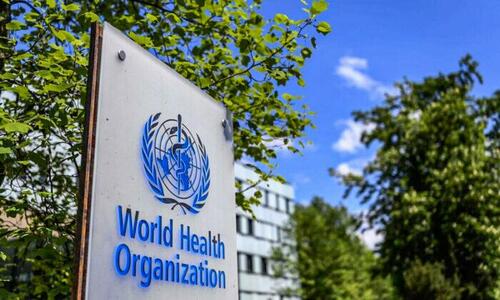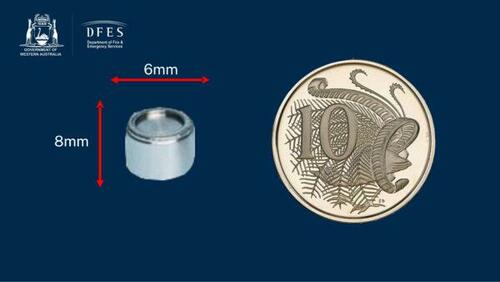WHO Suddenly Updates Medicines List For Nuclear Emergencies
Authored by Caden Pearson via The Epoch Times,
The World Health Organization (WHO) on Friday released recommendations on how to acquire and manage medical supplies for the treatment of exposure to radioactive materials in emergencies.
The report sets out for countries and governments how to develop and maintain a national stockpile of specific medical supplies that can lower risks and treat injuries caused by radiation.
Maria Neira, the head of the WHO’s Public Health and Environment department, emphasized the importance of having “ready supplies” of crucial drugs developed over the last decade.
“In radiation emergencies, people may be exposed to radiation at doses ranging from negligible to life-threatening. Governments need to make treatments available for those in need—fast,” Neira said in a statement.
It’s the first time the publication has been updated since 2007.
“This updated critical medicines list will be a vital preparedness and readiness tool for our partners to identify, procure, stockpile, and deliver effective countermeasures in a timely fashion to those at risk or exposed in these events,” said Dr. Mike Ryan, the executive director of WHO’s health emergencies program.
The medicines listed in the publication for a national stockpile include only those specifically used today to treat human over-exposure to radiation, according to the WHO. Other typical lists of medical supplies for stockpile would include generic supplies like personal protective equipment (PPE), trauma kits, fluids, antibiotics, and painkillers.
The WHO stated its data, prepared in annual reports, showed that many countries are still unprepared for radiation emergencies.
A worker, wearing protective suits and masks, takes notes in front of storage tanks for radioactive water at Tokyo Electric Power Co’s (TEPCO) tsunami-crippled Fukushima Daiichi nuclear power plant in Okuma town, Fukushima prefecture, Japan, on Feb. 10, 2016. (Toru Hanai/Reuters)
Stockpile
The report focussed on which medicines should be stockpiled and how they should be stored and managed, as well as the role that different organizations play in preparing for and responding to emergencies.
The WHO noted that a collection of medical supplies commonly found in a radiation emergency stockpile include stable iodine to protect the thyroid from radioactive iodine, chelating agents such as Prussian blue to remove radioactive caesium from the body, and decorporating agents like calcium-/zinc-DTPA to treat internal contamination with transuranium radionuclides.
Additionally, there are also cytokines included to help reduce the damage to bone marrow in cases of acute radiation syndrome and other medicines to treat symptoms such as vomiting, diarrhea, and infections, according to the WHO.
The report discusses emerging treatments and medical countermeasures, such as studies identifying new cellular and molecular pathways and means of administrating drugs that may be exploited for novel treatments and new products for use during a radiation emergency.
An image of a small round and silver capsule containing radioactive Caesium-137 that went missing in transportation between a mine site north of Newman and the north-eastern parts of Perth between Jan. 10–16, obtained on Jan. 27, 2023. (AAP Image/Supplied by Department of Fire and Emergency Services WA)
Radiological and Nuclear Emergencies
According to the WHO, a radiological or nuclear emergency is a situation that negatively impacts human life, health, property, or the environment.
The report considers possible scenarios for radiological and nuclear emergencies, including accidents at nuclear power plants and nuclear warfare.
An accident at a nuclear power plant, medical or research facility, or accidents during the transport of radioactive materials are examples of accidental radiological and nuclear emergencies that could occur, according to the WHO.
They can involve a number of situations, such as nuclear power plant accidents such as Chernobyl and Fukushima. Situations can also involve accidental exposure to uncontrolled radiation sources, and accidentals while transporting radioactive materials.
One such incident happened in Australia recently, where a small, solid capsule measuring 8 mm by 6 mm was thought to have dropped off a truck during transportation from a mine to Perth. The capsule is radioactive and can potentially cause severe skin burns and illness. It is reported to emit a level of radiation equivalent to receiving 10 x-rays in one hour, at 2 millisieverts per hour.
Radiation emergencies may also occur in conjunction with conventional emergencies, natural disasters, military conflicts, or malicious acts involving radiation sources, the WHO noted.
Tyler Durden
Sun, 01/29/2023 – 12:30
via ZeroHedge News https://ift.tt/iUMOjsY Tyler Durden


